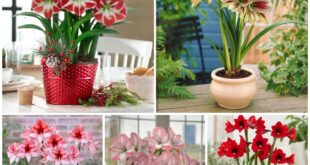Designing hanging flower baskets is a delightful way to bring vibrant color and lush greenery to your outdoor spaces. These versatile and beautiful garden elements can enhance patios, porches, and even indoor areas. Whether you’re a seasoned gardener or a beginner, creating a stunning hanging flower basket involves a few key steps. Here’s a guide to help you design the perfect hanging flower basket.
1. Choose the Right Basket
The first step in designing a hanging flower basket is selecting the right container. Baskets come in various materials, including:
- Wire Baskets with Coco Liners: These are popular for their natural look and excellent drainage.
- Plastic Baskets: Lightweight and often come with built-in water reservoirs.
- Ceramic or Terracotta Pots: Attractive but heavier and may need additional support.
Ensure the basket has adequate drainage holes to prevent waterlogging.
2. Select Suitable Plants
Choosing the right plants is crucial for a successful hanging basket. Consider the following factors:
- Sunlight Requirements: Match plants to the amount of sunlight your basket will receive (full sun, partial shade, or full shade).
- Growth Habit: Combine plants with different growth habits, such as trailing, upright, and bushy varieties, to create visual interest.
- Color Scheme: Decide on a color palette that complements your space. Monochromatic, analogous, or contrasting colors can all make striking displays.
Popular choices for hanging baskets include petunias, fuchsias, lobelias, geraniums, and ivy.
3. Prepare the Soil
Use a high-quality potting mix that retains moisture but also provides good drainage. Adding slow-release fertilizer to the soil will help nourish your plants throughout the growing season.
4. Planting Technique
Follow these steps to plant your hanging basket:
- Layering: Start with a layer of moss or a coco liner at the bottom for better water retention and drainage.
- Soil: Fill the basket halfway with potting mix.
- Plant Placement: Arrange your plants. Place trailing plants around the edges, upright plants in the center, and fillers in between. Ensure roots are adequately covered with soil.
- Top Up: Fill with more potting mix, leaving about an inch from the top to allow for watering.
5. Watering and Maintenance
Proper watering is essential for hanging baskets. They tend to dry out faster than ground plants. Water thoroughly until water drains from the bottom, and check moisture levels daily. During hot weather, you might need to water twice a day.
- Fertilizing: Use liquid fertilizer every two weeks to promote healthy growth and abundant blooms.
- Pruning: Regularly deadhead spent flowers and trim back any overgrown areas to keep your basket looking fresh and vibrant.
- Pest Control: Keep an eye out for pests like aphids and spider mites. Treat infestations promptly with appropriate remedies.
6. Positioning
Hang your basket in a location where it will thrive based on the plant’s sunlight requirements. Use sturdy hooks and ensure they are securely fastened to support the weight of the basket, especially when wet.
7. Seasonal Care
Depending on your climate, you may need to bring your baskets indoors during extreme weather conditions. Consider seasonal plants to refresh your baskets throughout the year. In colder months, switch to frost-tolerant plants or evergreens.
Designing hanging flower baskets is a rewarding gardening project that can transform any space with bursts of color and texture. By choosing the right plants, container, and soil, and providing proper care, you can enjoy beautiful hanging displays throughout the growing season. Experiment with different plant combinations and arrangements to create unique and eye-catching designs that reflect your personal style. Happy gardening!
 careyfashion.com Carey Fashion
careyfashion.com Carey Fashion























